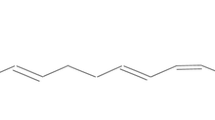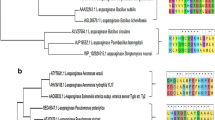Abstract
The full thioredoxin coding sequence from Fasciola hepatica has been cloned into the pGEX-2T expression vector and produced in Escherichia coli as a fusion protein. The recombinant protein proved to be biologically active, using an insulin reduction assay, and was also able to activate thioredoxin peroxidase from F. hepatica. These observations suggest that this protein could participate in a redox cascade involved in the maintenance of cell homeostasis as well as in parasite protection against reactive oxygen species produced by the host.
Similar content being viewed by others
Author information
Authors and Affiliations
Additional information
Electronic Publication
Rights and permissions
About this article
Cite this article
Salazar-Calderón, M., Martín-Alonso, J., Ruiz de Eguino, A. et al. Heterologous expression and functional characterization of thioredoxin from Fasciola hepatica . Parasitol Res 87, 390–395 (2001). https://doi.org/10.1007/s004360000353
Received:
Accepted:
Published:
Issue Date:
DOI: https://doi.org/10.1007/s004360000353




